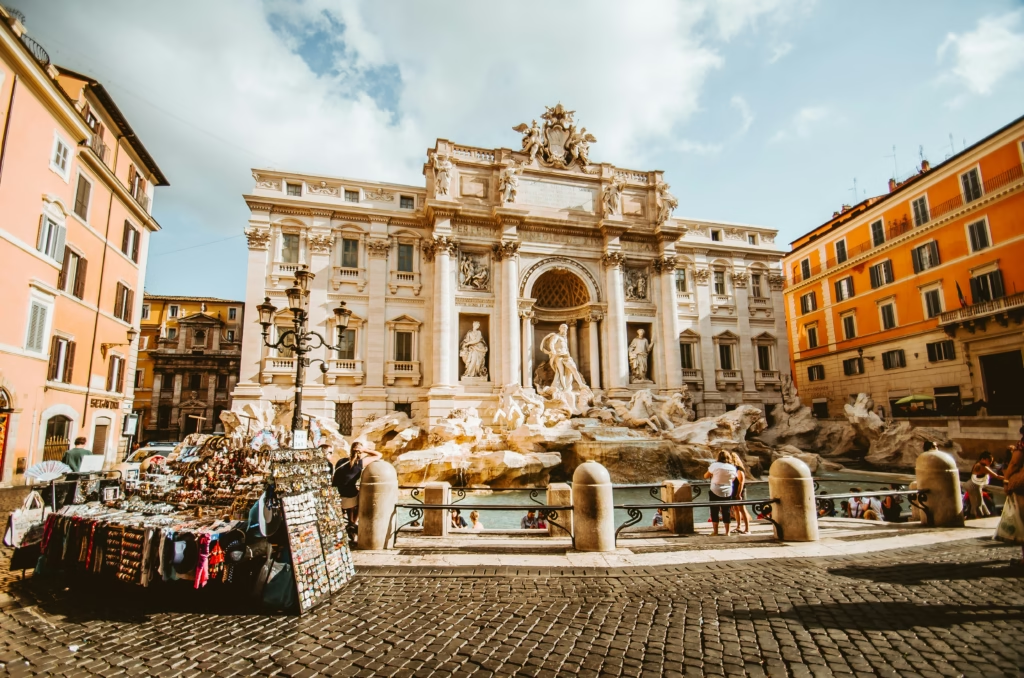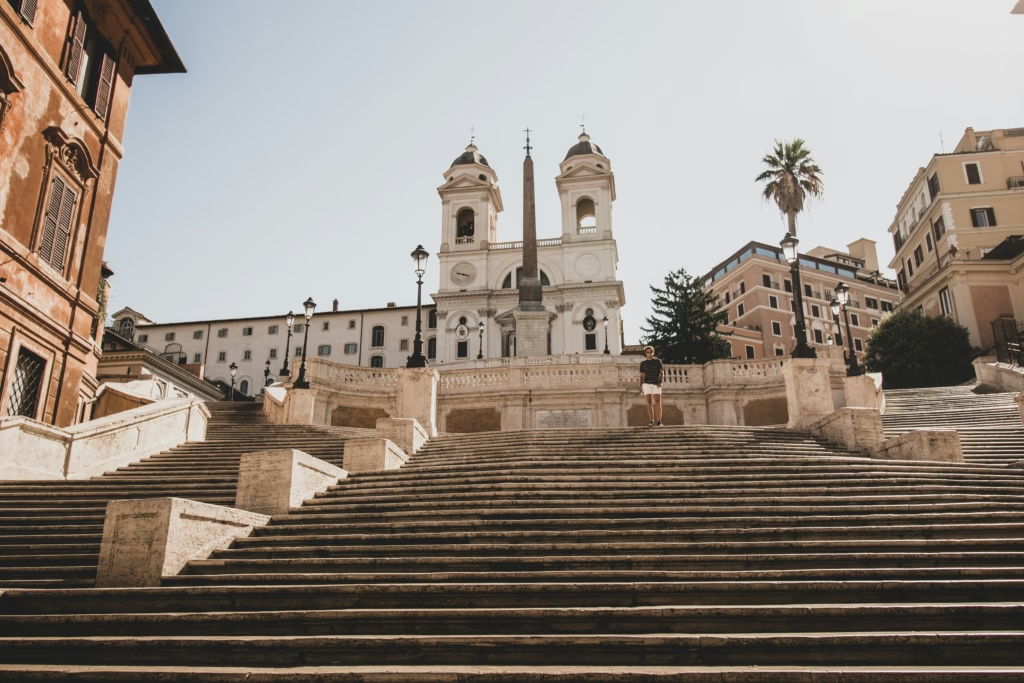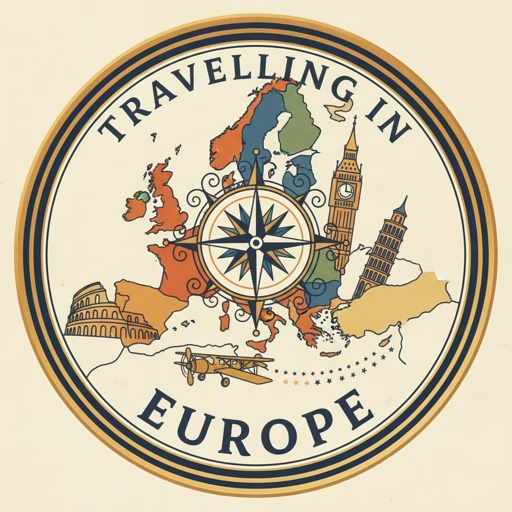Why You Should Visit Rome — once, twice, forever

Equal parts ruin-porn, trattoria romance, and gelato-fuelled wandering. A love letter and a travel dossier rolled into one.
Rome is that rare place that feels both impossibly ancient and wildly alive — marble ruins throwing long shadows over scooters, baroque fountains spitting water into piazzas where students argue about poetry. If you want history that you can touch, food that will rearrange your priorities, and streets that give you goosebumps for no good reason, Rome is a must-see once-in-a-lifetime city. Read on for how to get there cheap(ish), where to fall in love (with art, architecture, and carbonara), and how to plan the perfect Roman swoon.
Table of contents
- Getting there — budget flights & smart arrivals
- Fast European weekenders — train links to nearby cities
- The essentials — the sights you absolutely can’t miss
- Nightlife & restaurants — from aperitivo to Michelin stars
- Stay your way — from palatial luxury to cosy mid-range
- Why Rome feels like a classic — what gives it that “eternal” buzz
- Pro Tips, packing, and a quick romantic itinerary (48 hours)
Getting there — budget airlines and airports
Good news: Rome is well served by low-cost carriers and full-service airlines alike, so whether you’re scrimping for pizza money or arriving in style, there’s an option. Budget airlines commonly flying into Rome’s two airports (Fiumicino/FCO and Ciampino/CIY) include Ryanair, easyJet, Wizz Air, Vueling, and Volotea among others — great for snagging cheap fares within Europe if you book early or chase a flash sale. For flight comparators and current deals, services like Skyscanner and Google Flights are your friends. Skyscanner
Pro Tip — which airport?
- Fiumicino (FCO) is the main international airport with the fastest train and bus links to the city centre.
- Ciampino (CIY) is smaller and often used by budget carriers — it’s closer to central Rome but offers fewer amenities.
Fast weekenders — trains that make Rome a hub
One of Rome’s superpowers: it’s a major rail hub with high-speed connections to Italy’s other big cultural magnets. You can be in Florence in roughly 1½ hours on Italo or Trenitalia’s Frecciarossa/AV services; Naples is about 1–1.5 hours; Milan around 3 hours; Venice about 3.5–4 hours depending on the service. High-speed private operator Italo and national operator Trenitalia both provide frequent, comfortable services, so day trips (or multi-city Italian circuits) are easy to stitch together. Italo Treno
Pro Tip — book trains early
Book high-speed train tickets a few weeks in advance for the best fares; both Italo and Trenitalia release cheaper advance-purchase fare classes. Last minute trip? No worries, tickets aren’t expensive.
The essentials — Rome’s most popular sights (and why they matter)
Rome is basically a greatest-hits album of Western civilization. Here’s the tracklist you shouldn’t skip:
- The Colosseum & Roman Forum — Gladiators, emperors, and the city that built an empire. Walk where history did heavy lifting.
- The Vatican Museums & Sistine Chapel — Michelangelo’s ceiling will make you stop breathing for a glorious minute. (Book ahead.) Vatican is actually separate independent (tiny) country inside Rome.
- St. Peter’s Basilica — climb the dome for the best panorama of Rome’s skyline.
- Pantheon — a perfectly preserved ancient temple with a heavenly oculus.
- Trevi Fountain — toss a coin; clinicians of romance recommend at least three.
- Piazza Navona & Campo de’ Fiori — baroque theater, outdoor cafes, flower stalls, and a market that hums.
- Spanish Steps & Via Condotti — for people-watching and luxury-window-shopping.
- Trastevere — cobbled lanes, a lively local scene, and the kind of atmosphere that makes you sigh.
- Borghese Gallery & Villa Borghese — calm greenery, Renaissance and Baroque masterpieces (reserve entry).
These are the anchor points; beyond them, let your feet (and the scent of espresso) decide.
Nightlife & restaurants — two very important Rome rituals
Rome by night is a different animal: piazzas glow under lamplight, trattorie hum, and bars pulse with late-evening chatter.
Aperitivo → Dinner → After-hours
Start with aperitivo (pre-dinner drinks and snacks) around Piazza Navona or Monti, then dinner in a neighbourhood trattoria — think thin, saucy Amatriciana or creamy carbonara — and end with a late-night passeggiata (stroll). If you love lively bars, Testaccio and Trastevere are prime picks.
Michelin dining (if you’re treating yourself)
Rome boasts several Michelin-starred temples of gastronomy. At the summit sits La Pergola (the city’s famed three-Michelin-star restaurant at the Rome Cavalieri) — haute cuisine with sweeping views and that “this meal changes you” feeling. Other starred addresses across the city include Il Pagliaccio, Glass Hostaria, Imàgo, and more — all listed in the Michelin Guide. Make reservations well in advance (and bring a jacket; some places are delightfully formal). MICHELIN Guide
Pro Tip — dinner etiquette
In Rome, dinners start late by many standards (8–10pm). Sunday nights can be surprisingly quiet; aim for weekday evenings if you crave buzz.
Where to sleep — palace, boutique, or bed & breakfast?
Rome’s accommodation spectrum is gloriously wide:
- Luxury: Think grand hotels with marble lobbies, rooftop views over the dome, and valet service — Rome has palaces turned hotels aplenty (and five-star names with spas and Michelin restaurants inside).
- Boutique & design hotels: Ideal for style seekers who want chic rooms and great neighbourhood vibes (Monti, Prati, Trastevere).
- Mid-range & family hotels: Well-located B&Bs and three-star hotels around Termini, Vatican, and central neighbourhoods offer comfort without bankruptcy.
- Budget options: Hostels, guesthouses, and short-stay apartments — handy if you want to spend more on meals than on linens.
Pro Tip — neighbourhood matters
- For first-timers: Centro Storico, Monti, or Prati put you within walking distance of many sites.
- For nightlife and atmosphere: Trastevere is intoxicatingly local.
- For train travellers: Termini is super-convenient but less charming after dark.
Rome is the absolute classic — and here’s why it steals your heart
Rome’s power comes from depth: layers of history stacked like strata in a canyon. Empire, papacy, Renaissance genius, baroque spectacle, and modern Italian life all cohabit in the same square kilometre. Walk a few steps and you travel centuries. The city slows you down in the best way — you find yourself lingering over coffee, deciphering an inscription, or staring at a fountain until it says something personal to you. It’s romantic without trying hard; the romance is built into the stones.
48-hour romantic-ish itinerary (taste of Rome)
Day 1 — Morning: Colosseum → Roman Forum → Lunch of supplì & espresso near Monti.
Day 1 — Afternoon: Pantheon → Piazza Navona → gelato at Giolitti.
Day 1 — Evening: Aperitivo in Trastevere → dinner (classic trattoria).
Day 2 — Morning: Vatican Museums & St. Peter’s → climb the dome.
Day 2 — Afternoon: Stroll Villa Borghese → Borghese Gallery (book ahead).
Day 2 — Evening: Sunset from Pincian Hill → final dinner with a view (book La Pergola or another Michelin spot if splurging).
Leave space for detours. Rome rewards the unplanned.
Pro Tips
Timing: November–March is cooler and less crowded; April–June and September–October are beautiful but busier.
Tickets: Book Vatican and Colosseum timed tickets in advance to avoid long lines.
Cash vs Card: Many places accept cards, but carry some cash for market stalls and small cafes.
Walking: Bring comfortable shoes — Rome’s cobbles are charming but relentless.
Language: A few Italian pleasantries go a long way — grazie, per favore, buongiorno. Locals appreciate the effort.
Practical stuff: safety, money, and small annoyances
- Pickpockets: Common in crowded tourist spots — pocket vigilance advised. (Check out: Top 5 Tourist Scams in Europe – Europe expedition)
- Taxis: Use official white taxis or rideshare apps; agree on approximate fares for farther trips.
- Water: Public drinking fountains (nasoni) are safe, refreshing, and free — bring a reusable bottle.
Final flourish: why Rome deserves the headline “see it once in your life”
Rome is theatre, museum, cathedral, and kitchen rolled into one sprawling, sun-washed set. It is literally the place where Western architecture, religion, politics, and art learned their cues. More importantly, Rome does something to you: it loosens the years and replaces them with something warmer — a sense that time is a loop you can walk through, then sit and sip while the world continues briskly around you.
So book the flight (budget options abound), pack the comfiest shoes you own, and bring an appetite for food and wonder. Rome doesn’t just deserve a visit — it deserves a slow, deliberate, reverent falling-in-love. And then maybe another visit, because one trip will never be enough.

Can’t travel yet? Binge the world from your couch—Amazon Prime’s travel shows are basically teleportation.
Click here for a 30-day free trial and start globetrotting from your couch.
(Affiliate link. If you click and buy something, I may make a small commission. Think of it as you tipping me without spending extra)
